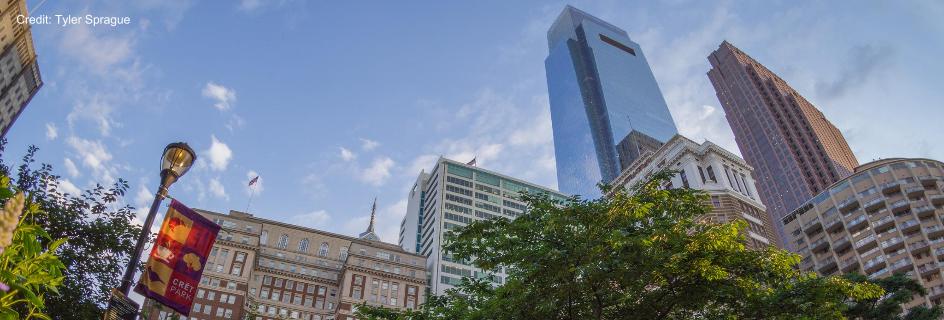- About GPA
- Global Events
- GLOBAL NEWS FROM PHL
- Global Directory
- World Heritage City
- Sustainable Development Goals (SDGs)
- Global Philadelphia Role on Sustainable Development Goals
- Completed Sustainable Development Goals
- SDG#1: No Poverty
- SDG #2: Zero Hunger
- SDG#3: Good Health & Well-Being
- SDG#4: Quality Education
- SDG#5: Gender Equality
- SDG#6: Clean Water & Sanitation
- SDG#7: Affordable and Clean Energy
- SDG #8: Decent Work and Economic Growth
- SDG #9: Industry, Innovation, and Infrastructure
- SDG#10: Reduced Inequalities
- SDG#11: Sustainable Cities and Communities
- SDG#16: Peace, Justice and Strong Institutions
- SDG#17: Partnerships for the Goals
- Press
Home ›
Book Review: "Discovering Philadelphia: Places Little Known" by David S. Traub
Posted on April 17, 2018
David S. Traub has continued his search for the hidden gems of Philadelphia in his newest installation of book of photographs called "Discovering Philadelphia: Places Little Known".
Like his first book, "Searching for Philadelphia: The Concealed City," Traub goes out into the city to find places that are ordinarily overlooked by passersby and showcases them in his book that was published just last year.
The first installation of this project, "The Concealed City" that was published in 2013, takes a look at unique architectural facets that might go unnoticed. Traub goes from examining entryways to narrow streets, to hidden courtyards, to tiny parks, and more. Each section of the book seeks to find places that are otherwise unknown to visitors and, sometimes, even to its residents.
Traub takes his reader on a journey of historic Philadelphia that goes from Old City to Chestnut Hill. He points out what makes each item special while also educating the reader on the history of what they’re looking at. By the end of the book, the reader knows who the major architects of Philadelphia were, what year the structures were built, and who used to own it.
His choice of black and white photography makes the reader look intently at the photos and gives them a feel of what it might have looked like when it was originally built. Though others might say the black and white photography takes away from the vibrancy of the scenery, it only adds to its mysteriousness and entices the reader to visit the actual site.
In his second book of the series, "Places Little Known," Traub takes the reader on a journey through the city section by section. He visits Old City, West Philadelphia, North Philadelphia, and many more places.
This book focuses mainly on the characteristics of these districts and what makes each of them unique. While Old City has many narrow cobblestone alleys the River Wards have more open areas with row homes.
Traub takes a detailed eye with him wherever he goes and it shows through his photography. He isn’t afraid of peeking through fences or leaning over railings to find the most charming spot of the neighborhood in order to show the reader what makes each place special.
Unlike the first book, Traub also provides maps for some locations that are harder to find than others. It is clear that he is dedicated to not only giving the reader a glimpse of the neighborhood but also letting them know the exact location of the photos.
These books are not merely for people to peruse and simply look at these places through photos but is also to make them go out into the city. Traub doesn’t just want people to see these places secondhand but to view them in person to witness the true beauty each one holds. He wants all of his readers to become just as enthusiastic and excited to learn about Philadelphia as he is and he certainly does a good job of that through his photos.
Written by Erin Yoder on behalf of Global Philadelphia Association







